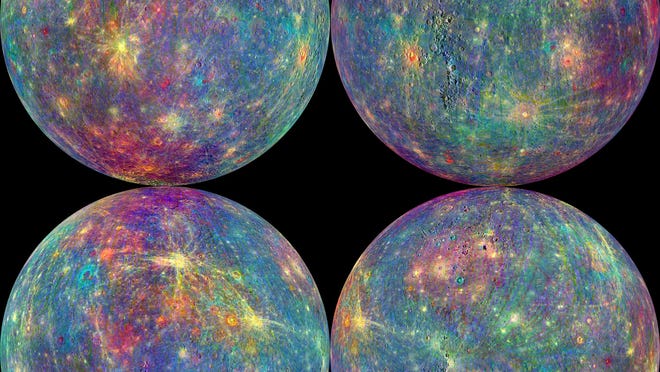The more in the sky, the better.
Less than two months after early risers were able to see four planets in alignment in the morning sky, Mercury will join the party, allowing the U.S. to witness five planets lined up in the sky for the first time in nearly 20 years.
For the rest of the month, everyone in the U.S. will be able to see Mercury, Venus, Mars, Jupiter and Saturn in the early morning sky.
It may be difficult to spot Mercury in early June because its close proximity to the horizon, EarthSky.org reported. It may require binoculars to see all planets in early June, but Mercury should be more visible by June 10, making it easier to see with the naked eye, as long as city lights and weather conditions don’t prevent people from seeing the spectacle.
Another fascinating tidbit of the alignment is all the planets will appear in order of the solar system, of course excluding Earth.
This isn’t a rare occurrence, as it is the first time it will appear in order in the sky since December 2004, according to Sky & Telescope. It will take another near-20 years for it to happen once more, as it won’t appear again in order until 2040.
The reason the planets will all appear at once is because all of the planet’s orbits around the sun are near aligned. Mercury orbits the sun ever 88 days, while it takes Saturn 29 years to do so.
The conjunction will be visible in the U.S. and rest of Northern Hemisphere in the early morning by looking east towards southeast, beginning about an hour before sunrise until the sun’s brightness overtakes the sky. Those in the Southern Hemisphere should look east to northeast.
“Just make sure you set your alarm and wake up on time,” Sky & Telescope said.
SHOOTING STARS: How to watch every meteor shower in 2022
GREAT CONJUNCTION: 7 awe-inspiring photos show Jupiter and Saturn as ‘double planet’
As a tip, Venus is the brightest planet to see, followed by Jupiter, EarthSky.org said.
The alignment will reach its peak on June 24, according to Sky & Telescope, when the waning crescent moon will align in between Venus and Mars, serving as a faux-Earth in place of the solar system. As we creep into July, the alignment will disappear. NASA said Venus and Saturn will be gone from the early morning view by September.
“As June ends, Mercury is edging back toward the sunrise glare,” EarthSky.org said “As July begins, Mercury – often called the most elusive planet – will disappear from view.”
Follow Jordan Mendoza on Twitter: @jordan_mendoza5.


